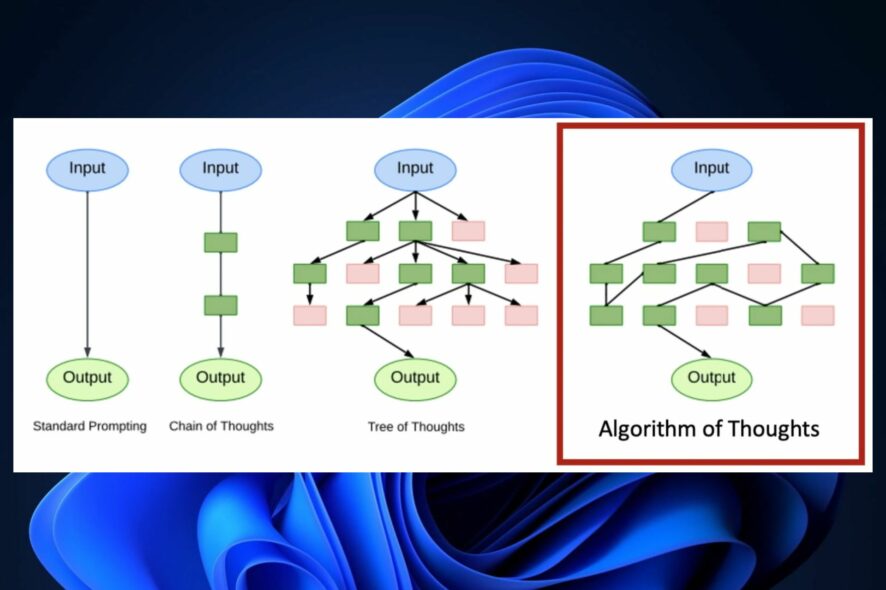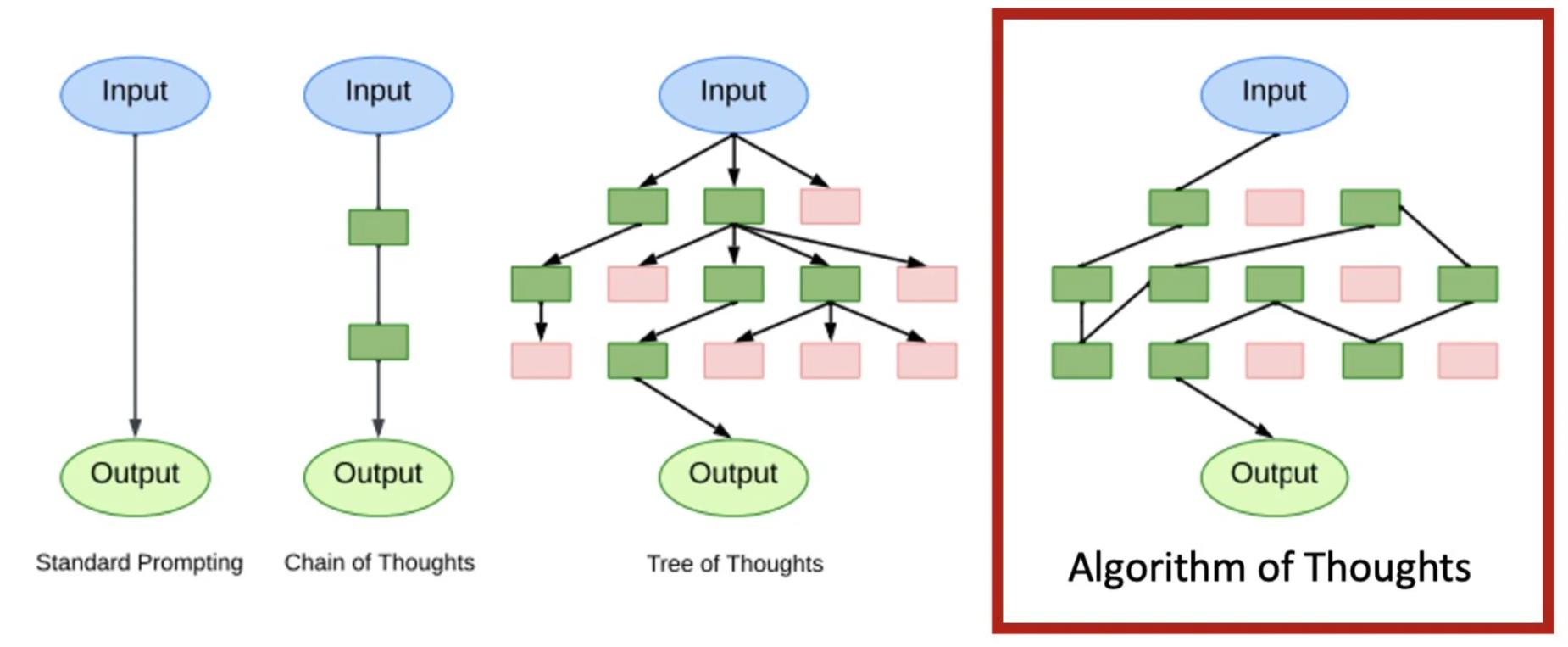Microsoft's Algorithm of Thoughts radically changes AI
The Algorithm of Thoughts can possibly be a way for the AI to achieve sentience.
4 min. read
Published on
Read our disclosure page to find out how can you help Windows Report sustain the editorial team Read more
Key notes
- The Algorithm of Thoughts consumes fewer resources, and it leverages AI's own capabilities to train it.
- In other words, AI trains itself, based on a single training path.
- The process is revolutionary, and it can possibly lead AI to achieve AGI.

We’re often amazed at just how naturally an AI can respond to us, and solve any task that we ask of it. And, let’s face it, you have often asked yourself, how does it know? How does AI know how to answer like this? Well, there is a training process that each AI model goes through in order to become knowledgeable on how to respond to you.
These processes follow a lot of models and use a lot of technology to form an answer. If we take, for example, Project Rumi, one of Microsoft’s recent releases, the model uses your device’s microphone and camera to inspect your physical expressions and your voice tone. And then it will respond to you accordingly. So if you talk to Rumi in an angry way, the AI will answer you in an angry way, as well.
These processes are called Trees of Thought because AI developers will use different methods of training to induce a sense of reasoning into the AI model. If ChatGPT or Bing Chat uses a personalized attitude to talk to you, they do so, because they went through Trees of Thought to develop that reasoning.
The process, while performant, uses both a lot of hardware power and time to train an AI model, but for now, it is the standard process for every AI model. However, in a recent research done by Microsoft in collaboration with Virginia Tech, the Redmond-based tech giant has come up with a new process: Algorithm of Thoughts. And it revolutionizes the way an AI model is trained.
What is the Algorithm of Thoughts and did Microsoft come up with it?
The Algorithm of Thoughts is a new AI training process that uses just one or a few training paths, as opposed to the Tree of Thought, which uses multiple paths of training. This new process employs a single training path, then it lets the AI use its own knowledge and creativity to access the other paths of training. 
The method ends up being much more efficient, and the AI will develop skills that are better than the ones based on human input and preset training paths. Not only this, but this method uses far fewer resources, both financially and technologically, to achieve the same results as the other training model.
Addressing this, we propose the Algorithm of Thoughts — a novel strategy that propels LLMs through algorithmic reasoning pathways, pioneering a new mode of in-context learning. By employing algorithmic examples, we exploit the innate recurrence dynamics of LLMs, expanding their idea exploration with merely one or a few queries. Our technique outperforms earlier single-query methods and stands on par with a recent multi-query strategy that employs an extensive tree search algorithm. Intriguingly, our results suggest that instructing an LLM using an algorithm can lead to performance surpassing that of the algorithm itself, hinting at LLM’s inherent ability to weave its intuition into optimized searches.
Microsoft
With the Algorithm of Thoughts, Microsoft wanted to reduce the costs of training an AI, and it not only came with it, but it also made AI much more performant in dealing with self-reasoning. By letting the AI figure out its own learning path, Microsoft achieved a method that only encouraged AI to develop on its own, without or with little human input.
According to the research, this model still needs improvement when it comes to adaptive behavior, but in a way, the Algorithm of Thoughts can possibly be a way for the AI to achieve sentience.
But what do you think about it? Let us know in the comments section below.








